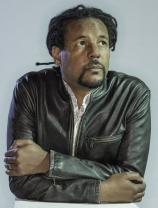The Nickel Boys
Review
The Nickel Boys
In his Pulitzer Prize–winning novel, THE UNDERGROUND RAILROAD, Colson Whitehead took a creative and deservedly unsettling approach to harshly illuminating the darkest, most shameful episodes in our country’s history. Now, in his latest book, THE NICKEL BOYS, he does the same thing for the 20th-century era of Jim Crow segregation in the U.S. South.
In his afterword, Whitehead mentions that the Nickel reform school at the heart of his novel was inspired (if that’s the right word) by a notoriously brutal real-life school in Florida, the Dozier School for Boys. He lists a number of resources for readers who want to learn more about this horrible place, many of whose cruelties were not fully unearthed until relatively recently. The knowledge that a place (probably more than one) very much like Nickel really existed in our country not that long ago, that boys perhaps very much like the ones in Whitehead’s novel lived, suffered and even died there, offers a chilling background to his narrative.
"THE NICKEL BOYS is, of course, about the particular degradations of the Jim Crow era of segregation in the U.S. South. But it’s also, more or less obliquely, about how the inequities of that time are still with all of us today..."
At the center of THE NICKEL BOYS is an idealistic boy named Elwood Curtis. He is in awe of the activism and inspiration of the Reverend Martin Luther King Jr., and he firmly believes that Dr. King and his allies (including sympathetic whites) will be able to leverage their collective voices and bring about change to the country’s racist policies through legislation and enforcement. His most prized possession is an album of Dr. King’s speeches.
Elwood’s enthusiasm for learning is recognized by one of his teachers, who connects him with a community college program for promising high school students. But on the way to his very first college class, a chain of unfortunate events lands Elwood not behind a desk, but behind the walls of the Nickel Academy.
The rules and social structure of the Nickel Academy recapitulate those of the country outside its walls, with the white boys receiving privileges and perks not afforded to Elwood and his friends (there’s a running “joke” about the school’s lone Latino student, who keeps getting sent from one side of campus to another because he’s not easily classified with either group). Right up until the end of his time at Nickel, Elwood remains convinced that the rule of law and love must prevail, that it’s possible to bend the world toward justice rather than toward cruelty and inhumanity. He returns again and again to the idealistic but hard-won words of Dr. King: “Be ye assured that we will wear you down by our capacity to suffer, and one day we will win our freedom.”
Episodes from Elwood’s time at Nickel are interspersed with scenes years later, when he has started a new life in New York City. Both internally and in his interactions with other so-called Nickel Boys, it’s clear that the trauma of his time at Nickel Academy remains raw and visceral: “That’s what the school did to a boy. It didn’t stop when you got out. Bend you all kind of ways until you were unfit for straight life good and twisted by the time you left.”
THE NICKEL BOYS is, of course, about the particular degradations of the Jim Crow era of segregation in the U.S. South. But it’s also, more or less obliquely, about how the inequities of that time are still with all of us today, about how it shapes our understanding of ourselves as individuals and as a country, and about how far we have to go to realize the promise of Dr. King’s hopeful words.
Reviewed by Norah Piehl on July 19, 2019
The Nickel Boys
- Publication Date: June 30, 2020
- Genres: Fiction, Historical Fiction
- Paperback: 224 pages
- Publisher: Anchor
- ISBN-10: 0345804341
- ISBN-13: 9780345804341




